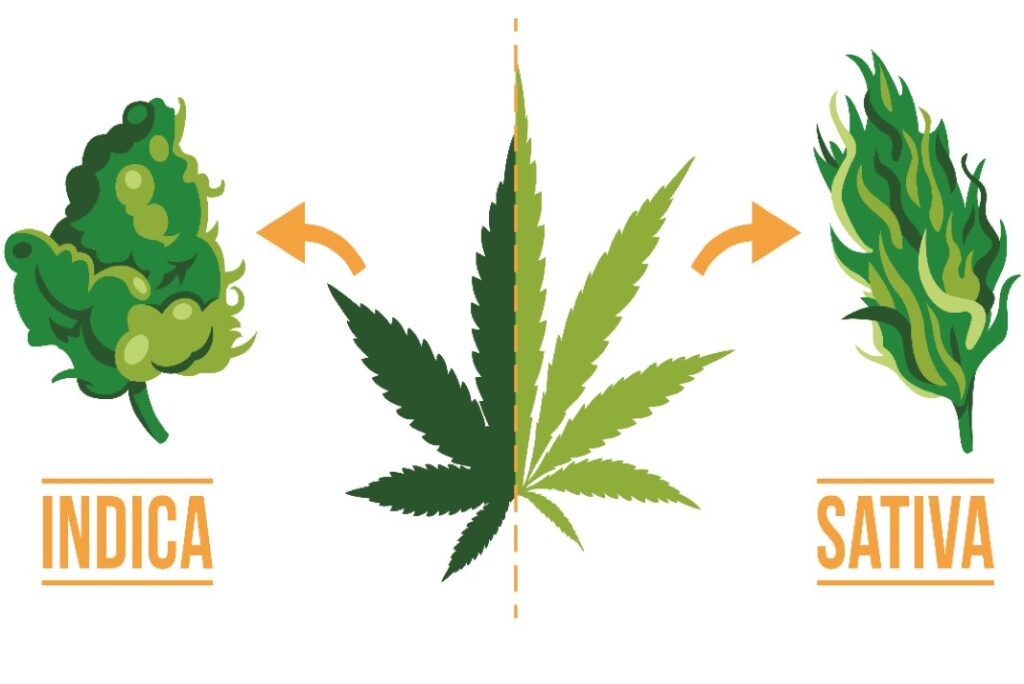Two of the most utilized words in the world of weed: indica and sativa. But are we using these terms correctly? With misinformation running rampant on the internet, it’s about time we got the real answers for you. We delved into scientific journals to pour over the cold hard facts so you don’t have to (you’re welcome). Warning – this article may cause you to rethink how you’ve been selecting your strains.
The Current Situation
As it stands right now, in the legal cannabis market in Canada when you go into a dispensary or online to purchase a cannabis product, anything you buy is more than likely categorized as indica, sativa, or hybrid (unless it’s distillate, but that’s a topic for another blog). This naming convention is to help consumers decide between copious varieties of the plant, called strains. New strains are being formulated all the time by selective inter-breeding. This is done to achieve a profitable combo of characteristics, some of which include fast growth, plentiful bud, resistance to pests, and higher THC levels (the psychoactive component in the cannabis plant that gets you high).
The widely accepted differences between an indica and sativa lie in both its physical structure and psychoactive properties. Indicas are known to be more sedative, hence the ‘in da couch’ reference, while Sativas are known for their cerebral effect. In drawings such as this one, indica plants are shown as shorter, bushier plants with darker leaves, whereas sativa plants are taller with lighter green, narrow leaves and sparser foliage.
Why It’s B.S.
So..here’s the thing. Cannabis plants have been interbred and hybridized for thousands of years, both in nature due to genetic drift and in science labs. Even if there used to be two distinct subspecies growing in the wild, there isn’t anymore. Over three decades ago, it was noted that unhybridized plants derived from India and Afghanistan landraces were already difficult to locate.
A Quick and Dirty History Lesson
Swedish botanist Carl Linnaeus is known to be the first to apply his taxonomic naming conventions to cannabis in 1737. He later used the term ‘cannabis sativa’ in published writings in 1753. Jean-Baptiste Pierre Antoine de Monet, chevalier de Lamarck (Wow…let’s just refer to him as Lamarck) emerged thirty years later with a supposed distinct species named Cannabis indica. This all sounds legit, until you start to take into account vague geographical identifications, cultural bias and outright errors being made. The further back modern scientists go, the more it’s being discovered that in the 18-20th centuries, these supposed experts were naming their plant collections very casually without basing it on the fundamental biochemical distinctions in the cannabis plant. Bottom line: you cannot currently guess the biochemical makeup of a cannabis plant based on its height, branching, or leaf morphology.
“Categorizing cannabis as either “Sativa” and “Indica” has become an exercise in futility. Ubiquitous interbreeding and hybridization renders their distinction meaningless. The arbitrariness of these designations is illustrated by “AK-47,” a hybrid that won “Best Sativa” in the 1999 Cannabis Cup, and won “Best Indica” four years later.” – John M. McPartland, Department of Molecular Biology, GW Pharmaceuticals, Cambridge, United Kingdom
The Way Forward
We know, it’s difficult to have your mind blown about these naming conventions. You’re probably wondering what the solution is, and how the industry can provide consumers accurate categories without our steadfast indica and sativas at the ready. What will the future look like in our dispensaries and online stores without any distinctions?
To get a true sense of cannabis plant properties, a biochemical analysis is absolutely necessary. This would establish an accurate cannabinoid and terpenoid profile for every single strain, which could then be used to properly categorize weed. Think of it this way- when you enter the LCBO, are there only two choices; red or white wine? Of course not! They are separated by region, grape varietal, medium-bodied vs. full-bodied, tasting notes for your palate. Cannabis plants deserve that same kind of detailed consideration.
We’re excited about the future and hope there will be a time soon where we’ll be able to appreciate cannabis plants for their individual characteristics. We’re doing it a disservice by obsessing about divisions and throwing each individual strain into two broad categories. Just like humans, all types of cannabis should be appreciated for their own unique attributes. ♥



